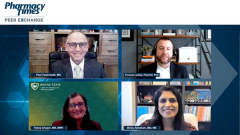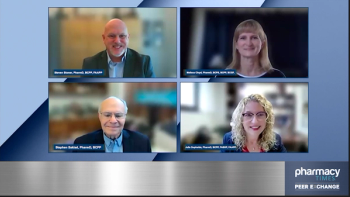
Challenges with Current Treatments and Emerging Treatments for C. difficile Infection (CDI)
Drs Chopra and Feuerstadt summarize challenges with current treatments and discuss live biotherapeutic products that are being studied for recurrent C difficile infection (rCDI).
Episodes in this series

Paul Feuerstadt, MD:We know that FMT [fecal microbiota transplant] works. We know that there’s a delta in the efficacy, and the delta is largely from open-label studies which had north of 90% efficacies for the most part, vs randomized controlled trials, which have closer to 70% efficacy. Teena, can you walk us through some of the challenges we have with treatments of C difficile and recurrent C difficile?
Teena Chopra, MD, MPH: You and Tom alluded to this earlier. When you were talking about dysbiosis, you were talking about this vicious cycle of dysbiosis that our recurrent patients enter. When we talk about the treatment of C difficile we’re giving, it’s almost counterintuitive. We’re giving antibiotics, and antibiotics are the biggest risk factors for C difficile. Then we treat these patients with antibiotics and causing dysbiosis. These antibiotics, particularly vancomycin, are very broad acting and not microbiome sparing. Both metronidazole and vancomycin will destroy our microbiome. Fidaxomicin, on the other hand, is more microbiome sparing, yet these antibiotics are going to destroy our microbiome. We aren’t addressing the underlying cause of dysbiosis. In my opinion, this is the biggest challenge we have in treatment of recurrent C difficile. Hence the need for these newer biotherapeutics that can address the dysbiosis. Hence the importance of fecal transplant, as Tom mentioned.
Paul Feuerstadt, MD:Excellent. We’ve had a hearty discussion on fecal microbiota transplantation, which is the method we’ve used for the better part of 10-plus years to supplement the microbiota, to supplement that deficiency, and to decrease recurrences. But there were limitations of those trials. They were usually relatively small and weren’t multicentered. Some were retrospective—very few were prospective—and there was heterogeneity with what was being used. A transplant being given in San Diego [California] might be different from Portland, Oregon; Houston, Texas; Miami, Florida; and New Haven, Connecticut. Contextualizing this, we’re driving toward more codified formulations, more predictable safety and efficacy profiles, and products that have been taken through more rigid clinical trials.
What I’m introducing is something called microbiota-based live biotherapeutic products. That’s a mouthful. That’s the FDA term. The short term is LBPs. There are 4 products that have gone through either phase 3 and phase 2, or phase 2 trials. Those are RBX2660, SER-109, CP101, and VE303. We’re going to dig a little deeper into these products over the next couple of sections. Before we do, we have to understand what the clinical trials look like.
There were certain similarities between all these clinical trials. First, across all these clinical trials, patients enrolled had recurrent C difficile, all the trials were multicentered, all the trials had a randomization, and all the trials had a placebo control group. Also, all the trials included an antimicrobial prior to intervention. This is a very important concept. When we consider microbiota replacement therapy or microbiota supplementation, it’s essential for us to realize that’s this isn’t done in a silo. It’s done after an antimicrobial used to minimize that vegetative phase, the microbiota replacement therapy that supplements the microbiota deficiencies.
Transcript edited for clarity
Newsletter
Stay informed on drug updates, treatment guidelines, and pharmacy practice trends—subscribe to Pharmacy Times for weekly clinical insights.






















































































































































































































